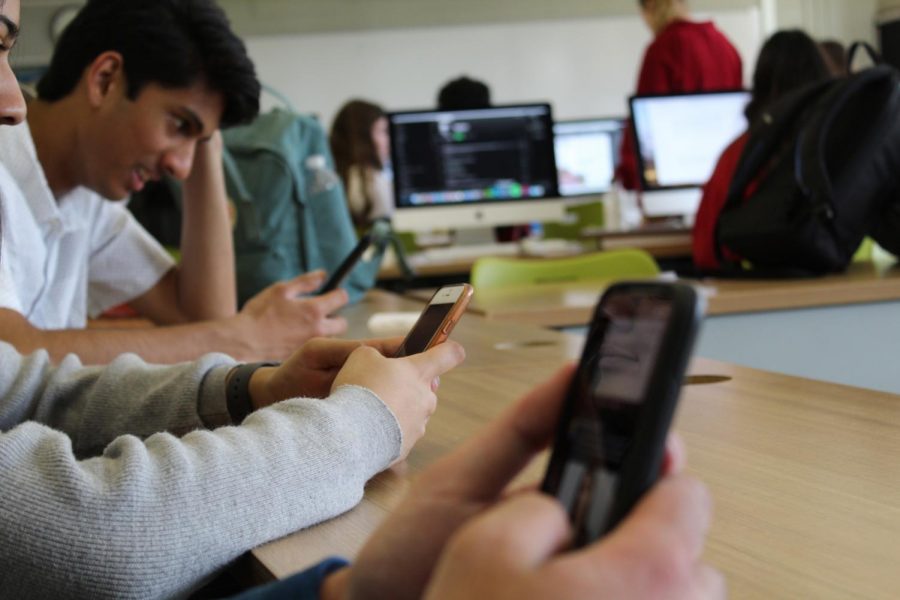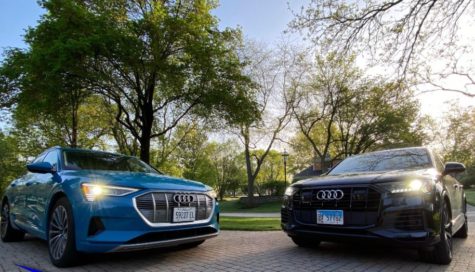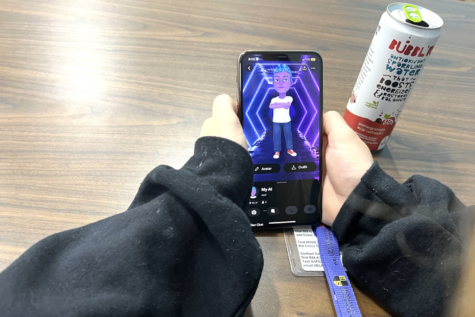5G Phones: The next generation
Phones are an essential part of a student’s life at Hinsdale Central. The move to 5G will make daily phone use even faster.
Phones are part of lives, it’s undeniable. These small boxes of metal and glass can command up to three hours a day for the average person, according to a study done by USC Annenberg. The tech that’s in these phones determines how we interact with the world and how the world interacts with us.
A good camera allows us to capture a moment and a nice screen allows us to see every detail. We make jokes about people with Androids because their Snapchats are choppy. Having the newest iPhone denotes you as someone with some money as the latest iPhone starts at $749 and can reach prices of up to $1,449, yes $1,449. That’s the same price as a decently optioned MacBook Pro or a fully loaded 4K iMac. Phones now have features that no one will use, but they sound cool, and we cough up the money for the new phone. Now the latest craze has reached, 5G, the next step after 4G. Well, 4G LTE, 4G has long been phased out by major phone manufacturers.
5G is the next technological advancement for phones. In recent times the lack of an accessory port became commonplace. The second major advancement was the mass production of bezels phones with edgeless screens. Now the third in recent times looms over the consumers, 5G. 5G means a new generation of the chips and processing of data in cellular phones. These new chipsets can deliver speeds up to 634 megabits per second when tested by CNET in San Francisco. To put it in perspective the average American household’s Internet speed is about 18.7 megabits per second. That’s a difference of 339 percent, on a phone no less.
There, however, is a problem. The United States doesn’t have widespread support and even worse we don’t have the phones for it.
“The US is trying to catch up to the 5G race and companies shouldn’t brand their phones as a supported device when it’s not actually 5G,” said Jason Fu, junior.
Currently, only Samsung, Nokia, Huawei, ZTE, and Ericsson make phones capable of the use of these networks, but only Nokia and Samsung sell these phones in the US with ZTE and Huawei not, over fears of the Chinese spying on us through them, no joke. Finally, Ericsson doesn’t sell their 5G capable simply because in the US it is a brand that no one knows about.
However, even with 5G’s relative lack of support in the US, Chicago is a test city for Verizon’s 5G network so if you are looking for a new phone on Verizon, this is your shot. That being said, 5G currently occupies a niche in the US that not even the rich can get into. As we all know the rich love AirPods and AirPods work best with an iPhone.
As far as the experience of 5G goes, it is the same. I was able to get my hands on a Motorola Z3; the only 5G enabled phone for sale in the US. I used it on Verizon’s test network while I was in the city and all I have to say is that the difference is negligible.
The phone’s Internet was fast, but so was my iPhone 6 on LTE. Yes, the speeds that 5G can reach are incredible, but the question needs to be asked. Is it necessary? In my experience LTE is about as fast as being connected to WiFi at home. What can a 300 percent increase from what’s in your house change? It’ll be faster, but can we perceive the difference? LTE is fine for daily use and the only time where 5G would be better is over larger data transfer, like when downloading a big file or streaming a movie. 5G is a significant technological achievement for data transfer but, there are both innovations for the better or for the sake of it. 5G ends on the latter of the two.
5G phones are the next big thing, but at this point in time, they lack the support needed to be used regularly by anyone. Additionally, data speeds on a phone have reached a point where they can be as fast or faster as what is in the house. The only thing I can think of is that 5G seems cooler to the consumer than 4G; it is a bigger number.














